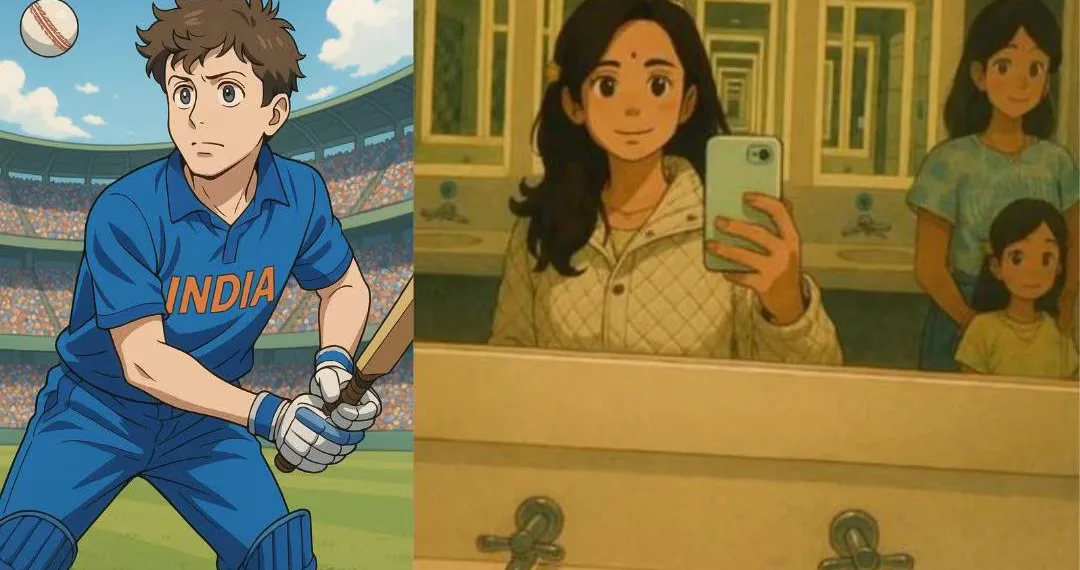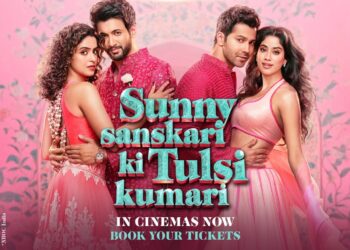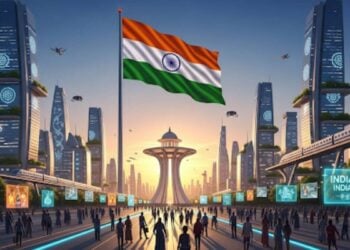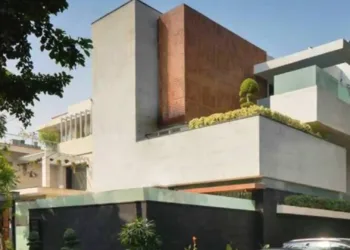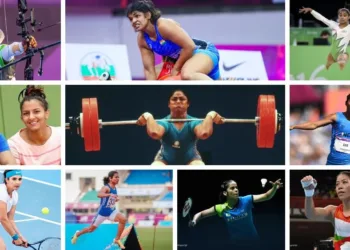The digital landscape transformed almost overnight as millions flocked to OpenAI’s ChatGPT with a singular mission: to reimagine themselves as characters in a Studio Ghibli film. What began as a creative experiment quickly evolved into a global phenomenon that transcended typical tech boundaries, drawing in everyone from casual social media users to high-profile politicians eager to see themselves rendered in the distinctive hand-drawn aesthetic made famous by Hayao Miyazaki’s beloved animations.
The feature’s explosive popularity pushed OpenAI’s infrastructure to its limits, with the company reporting an extraordinary milestone of one million new users in a single hour – growth metrics reminiscent of ChatGPT’s initial launch. As whimsical portraits inspired by classics like “Spirited Away” and “My Neighbor Totoro” flooded social feeds worldwide, OpenAI CEO Sam Altman dropped a tantalizing hint that sent ripples through the AI community: “Y’all are not ready for images v2…” The cryptic message suggests that what we’ve witnessed may be merely the opening act in a revolutionary new chapter of AI-generated art, even as questions about copyright, artistic integrity, and the boundaries of machine creativity continue to spark intense debate.
Table of Contents
ChatGPT Studio Ghibli: The Viral Sensation That Broke Records
When OpenAI quietly integrated the ability to generate Studio Ghibli-style illustrations into ChatGPT, few could have predicted the cultural tsunami that would follow. The feature’s appeal proved remarkably universal, transcending typical technology adoption patterns to captivate users across demographic boundaries. Social media platforms quickly transformed into virtual galleries of Ghibli-inspired portraits, with users enthusiastically sharing their AI-generated alter egos rendered in the distinctive watercolor-like aesthetic that has defined the legendary Japanese animation studio’s visual identity for decades.
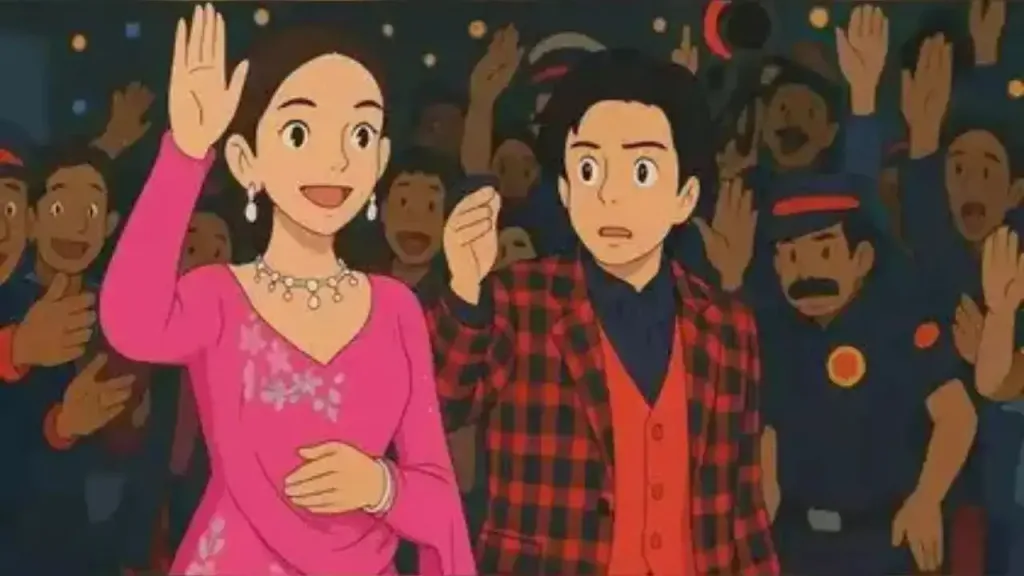
The scale of engagement proved unprecedented even by ChatGPT’s lofty standards. According to data from market research firm Similarweb, weekly active users surpassed 150 million for the first time this year, representing a significant milestone in the platform’s growth trajectory. Mobile analytics firm SensorTower confirmed an 11% increase in app downloads and a 5% rise in weekly active users compared to the previous week, while in-app purchase revenue grew by 6% – impressive metrics for an already dominant platform.
Sam Altman himself underscored the magnitude of this surge in a post on X (formerly Twitter), noting, “We added one million users in the last hour.” This extraordinary influx of new users created substantial technical challenges, pushing OpenAI’s infrastructure to its limits and requiring rapid scaling efforts. The demand proved so overwhelming that it temporarily strained OpenAI’s servers, forcing the company to limit the tool’s accessibility at peak times.
“We are getting things under control, but you should expect new releases from OpenAI to be delayed, stuff to break, and for service to sometimes be slow as we deal with capacity challenges,” Altman explained on Tuesday, acknowledging the infrastructure hurdles created by the feature’s runaway popularity. These technical challenges, while frustrating for some users who experienced intermittent outages, also highlighted the extraordinary scale of public interest in the tool.
“Y’all Are Not Ready”: Altman Teases the Next Evolution
Just as the initial wave of Studio Ghibli-style images began to stabilize, Sam Altman sent speculation into overdrive with his cryptic message: “Y’all are not ready for images v2…” The deliberately vague yet tantalizing statement immediately ignited theories about what enhancements might be coming to ChatGPT’s image generation capabilities.
Industry analysts have suggested several possibilities for what “images v2” might entail. Potential improvements could include higher resolution outputs, more nuanced control over artistic styles, enhanced ability to incorporate specific elements requested by users, or even the capacity to generate short animations in the Ghibli style rather than just static images. The reference to users “not being ready” implies a substantial leap forward rather than merely incremental improvements.
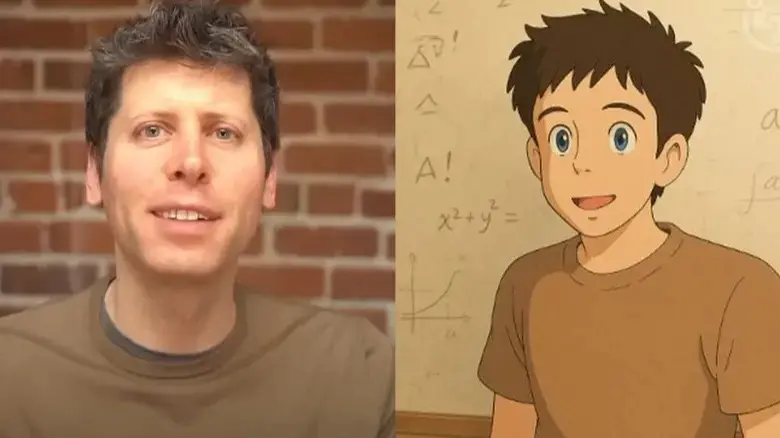
The timing of Altman’s tease – coming immediately after a period of unprecedented growth and technical challenges – also raises questions about OpenAI’s infrastructure readiness for an even more demanding image generation system. The company appears to be balancing its ambition to push AI capabilities forward against the practical realities of scaling to meet explosive demand. This tension between innovation and stability has characterized much of OpenAI’s recent development trajectory.
Whatever form “images v2” ultimately takes, Altman’s statement strategically maintains public interest and anticipation, ensuring that attention remains focused on ChatGPT’s evolving capabilities even as the initial wave of Ghibli-inspired content begins to normalize across social platforms.
| Metric | Before Ghibli Feature | After Ghibli Feature | Percentage Change |
|---|---|---|---|
| Weekly Active Users | Below 150 million | Above 150 million | Surpassed milestone |
| App Downloads | Baseline | +11% increase | 11% growth |
| In-App Purchase Revenue | Baseline | +6% increase | 6% growth |
| New Users (Peak Hour) | Not disclosed | 1 million | Unprecedented |
| Server Capacity | Sufficient | Strained, requiring limits | Required scaling |
Studio Ghibli: The Artistic Legacy Behind the AI Trend
For many younger users participating in the AI image generation trend, this viral moment may serve as their introduction to Studio Ghibli’s influential body of work. Founded in 1985 by Hayao Miyazaki, Isao Takahata, and Toshio Suzuki, Studio Ghibli has produced 22 feature-length films characterized by their meticulous hand-drawn animation, lush environmental details, and emotionally resonant storytelling that often blends fantasy elements with profound human experiences.
The name “Ghibli” itself derives from a Libyan Arabic word referencing a hot desert wind – chosen to signify the studio’s ambition to “blow a new wind through the anime industry.” This mission proved remarkably successful, with films like “Spirited Away” (which won the Academy Award for Best Animated Feature in 2003), “Princess Mononoke,” “Howl’s Moving Castle,” and “My Neighbor Totoro” achieving both critical acclaim and beloved status among audiences worldwide.
What makes Studio Ghibli’s artistic approach particularly distinctive – and challenging for AI to replicate – is its combination of technical precision with emotional expressiveness. The studio’s visual style emphasizes detailed natural environments, nuanced character expressions, and a watercolor-like quality that softens the boundary between reality and fantasy. These elements have proven surprisingly adaptable to AI interpretation, with ChatGPT’s generated images capturing much of the aesthetic essence that defines Ghibli’s work.
The irony of this technological homage is not lost on those familiar with Studio Ghibli’s thematic concerns. Many of Miyazaki’s films explicitly explore the tension between technological progress and natural harmony, often portraying industrialization and unchecked technological ambition as forces that threaten natural beauty and human connection – themes that take on new resonance when his artistic style is replicated by advanced AI systems.
Copyright Concerns and Miyazaki’s AI Skepticism
The viral success of ChatGPT’s Studio Ghibli-inspired images has reignited complex questions about copyright, artistic influence, and the legal boundaries of AI-generated content. While users have embraced the feature enthusiastically, the legal landscape surrounding such technology remains uncertain, particularly regarding the replication of a distinctive artistic style closely associated with a specific studio.
Evan Brown, a partner at law firm Neal & McDevitt, addressed this ambiguity: “The legal landscape of AI-generated images mimicking Studio Ghibli’s distinctive style is an uncertain terrain. Copyright law has generally protected only specific expressions rather than artistic styles themselves.” This distinction between protecting specific works versus broader stylistic approaches sits at the center of emerging legal debates about AI-generated content.
Adding another dimension to this discussion is Hayao Miyazaki’s well-documented skepticism toward AI-generated art. Comments from 2016 have resurfaced in which the legendary director expressed strong revulsion when shown early examples of AI-created imagery. “I am utterly disgusted,” Miyazaki stated at the time. “I would never wish to incorporate this technology into my work at all.” His reaction reflected deep concerns about the relationship between human experience, artistic expression, and technological simulation – concerns that gain renewed relevance as millions now use AI to mimic his studio’s distinctive aesthetic.
This tension between technological advancement and artistic tradition encapsulates broader cultural questions about AI’s role in creative fields. As tools like ChatGPT make sophisticated artistic styles more accessible to the general public, the boundaries between homage, inspiration, and appropriation become increasingly complex to navigate – both legally and ethically.
Grok 3 Unleashed: Create Stunning Ghibli-Style AI Portraits for Free – No ChatGPT Needed!
Frequently Asked Questions
How does ChatGPT create Studio Ghibli-style images, and what techniques does it use?
ChatGPT creates Studio Ghibli-style images through a sophisticated AI image generation system based on diffusion models, specifically using DALL-E 3 technology. Unlike simple filters that modify existing photos, this process involves analyzing millions of images to understand the fundamental visual elements that define Studio Ghibli’s distinctive aesthetic. When users request a Ghibli-style image, the AI identifies key stylistic elements like the studio’s characteristic watercolor-like backgrounds, distinctive character proportions, attention to natural details, and soft color palettes. The system then generates an entirely new image that incorporates these stylistic markers while applying them to the user’s specific request.
The technology doesn’t simply copy existing Ghibli artwork but rather synthesizes its understanding of the style to create original compositions. This approach allows for remarkable versatility in rendering different subjects—from portraits to landscapes to fantasy scenarios—while maintaining consistent stylistic coherence that evokes the hand-drawn animation techniques pioneered by Miyazaki and his team. The results demonstrate AI’s growing capacity to not just replicate visual information but to understand and apply the underlying aesthetic principles that define distinctive artistic styles.
Could Studio Ghibli or Hayao Miyazaki take legal action against OpenAI for this feature?
The question of potential legal action by Studio Ghibli or Hayao Miyazaki against OpenAI exists in a complex legal gray area that hasn’t been definitively tested in courts. While copyright law traditionally protects specific creative works rather than general artistic styles, the distinctive nature of Studio Ghibli’s aesthetic and OpenAI’s explicit marketing of “Ghibli-style” images could potentially strengthen a legal challenge. Several factors would influence any potential case: first, whether OpenAI’s training data included copyrighted Ghibli images; second, how specifically the AI replicates elements unique to Ghibli’s protected works versus broader anime conventions; and third, whether consumers might reasonably believe the images are officially associated with Studio Ghibli. Japan’s copyright laws, which tend to provide stronger protection for creators than U.S. laws, could also become relevant if Ghibli pursued international legal remedies.
However, legal action would face significant hurdles, including establishing that an artistic style itself deserves copyright protection and demonstrating tangible commercial harm. Many legal experts believe the most likely outcome would involve negotiated licensing agreements rather than protracted litigation, similar to how OpenAI has established partnerships with other content creators. For now, the situation remains a prominent example of how AI technology is outpacing existing legal frameworks for creative works.

